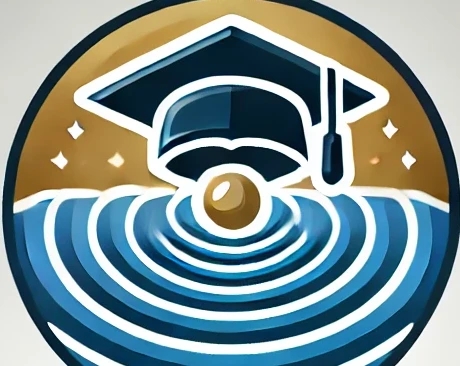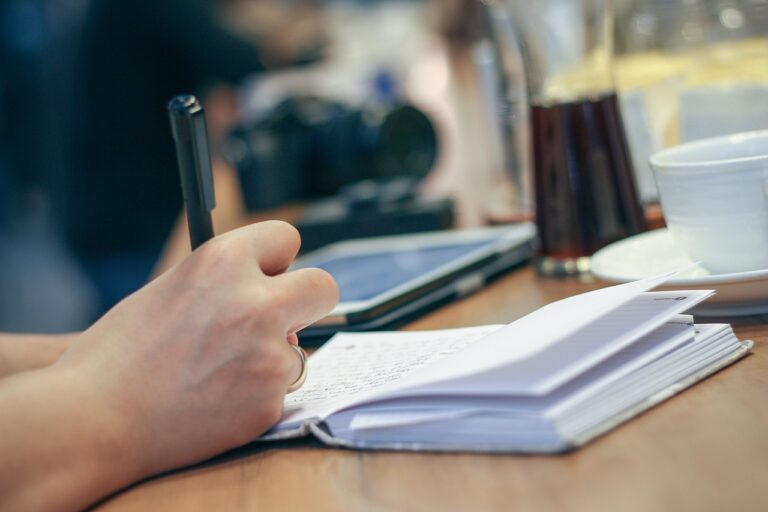Taking good notes sounds simple—until you’re actually in class or reading a textbook, trying to capture every important detail without falling behind or zoning out. For many students, note-taking feels like a race against time, where the goal is to jot down as much as possible before the lecturer moves on or the information slips away. But here’s the thing: note-taking isn’t just about writing things down—it’s about understanding and organizing information so you can remember and use it later.
If you’ve ever gone back to your notes before an exam and found them messy, confusing, or incomplete, you’re not alone. That’s because effective note-taking is a skill—a powerful one that doesn’t always get taught in school. When done right, your notes can become one of your strongest academic tools, helping you study smarter (not just harder), stay engaged during lessons, and make connections between key ideas.
The good news is, there’s no one-size-fits-all method. Different students learn in different ways, and the most effective note-taking style for you will depend on your learning habits, the subject matter, and even the type of teacher you have. Some people benefit from structured outlines, others from visual aids like mind maps or diagrams. Some prefer handwritten notes for better retention, while others love digital tools for their speed and organization.
In this guide, we’re going to explore practical and proven note-taking methods that students of all levels can try—whether you’re in secondary school, university, or self-studying. From classic approaches like the Cornell Method to newer techniques like digital note syncing and active recall strategies, we’ll help you find what works best for your brain and your goals. Because once you master how to take clear, organized, and meaningful notes, studying becomes a whole lot easier—and a lot less stressful.
7 Effective Note-Taking Methods for Students
1. The Cornell Method
How it works:
Divide your page into three sections:
A narrow left column (for keywords or questions)
A wider right column (for main notes)
A summary box at the bottom (for quick review)
During class, write your main notes in the right column. After class, jot down key terms or questions on the left side and summarize the topic at the bottom.
Best for:
Reviewing and studying later
Organizing detailed lecture content
Preparing for exams
Why it works: It forces you to think critically about what’s important, and makes it easier to review and self-test.
2. The Outline Method
How it works:
Use bullet points or indents to structure your notes like a traditional outline. Start with major points, then use subpoints to break them down.
Example:
Main Topic
Subpoint A
Supporting detail
Subpoint B
Best for:
Logical subjects (History, Biology, etc.)
Lectures that follow a clear structure
Why it works: It organizes information neatly and helps you see how ideas are related.
3. The Mapping Method (Mind Maps)
How it works:
Start with a central idea in the middle of the page, then branch out with connecting topics and subtopics in a visual “map” form using arrows, shapes, or colors.
Best for:
Visual learners
Subjects that require connecting ideas (e.g., Literature, Social Studies)
Brainstorming or revision
Why it works: It turns your notes into a visual memory aid and makes connections easier to recall.
4. The Charting Method
How it works:
Draw a table or chart with columns and rows to organize content. Each column has a heading (like date, event, cause, effect), and each row fills in details.
Best for:
Comparing or categorizing information
Subjects like History, Economics, or Science
Why it works: Makes patterns or relationships clearer, and saves time if information is repetitive.
5. The Sentence Method
How it works:
Write each new piece of information on a separate line, like a sentence. There’s no structure—just a list of key facts or ideas as they come.
Best for:
Fast-paced lectures
Capturing information quickly
Reviewing later for rewriting or reorganizing
Why it works: It’s simple and quick. You can always organize it better afterward.
6. The Flow Notes Method
How it works:
Instead of copying everything word-for-word, write ideas in your own words, use arrows to link concepts, draw doodles or diagrams—whatever helps you understand the content as it’s being taught.
Best for:
Engaging with ideas as you hear them
Subjects where deep understanding matters (e.g., Philosophy, Science)
Why it works: You’re actively processing information rather than passively recording it.
7. Digital Note-Taking (Using Apps or Devices)
How it works:
Use tools like Notion, OneNote, Evernote, or Google Docs to organize your notes digitally. You can type fast, insert images or links, and search your notes instantly.
Best for:
Students who type faster than they write
Those who want to sync notes across devices
Visual and tech-savvy learners
Why it works: It’s fast, searchable, and can include multimedia. Plus, it saves paper!
Bonus Tip: Combine Methods for Maximum Impact
You don’t have to stick to one method forever. Some students combine outlining with Cornell, or use mind maps to summarize outline-style notes. Try different styles and find what helps you remember and stay organized.
FAQs on Effective Note-Taking Methods for Students
1. Why is note-taking important?
Note-taking helps you stay focused, process information, and remember it better later on. It’s not just about writing things down—it’s about making sense of what you’re learning and having a solid resource for studying.
2. What’s the best note-taking method for me?
There’s no one-size-fits-all method. It depends on your learning style, the subject, and even the teacher’s pace. Visual learners might prefer mind maps, while logical thinkers may prefer outlines or Cornell notes.
3. Should I take notes by hand or on a laptop?
Both work—it depends on what you’re more comfortable with. Handwritten notes may help you retain information better, while digital notes are faster and easier to organize or search through. Some students combine both.
4. What if I can’t write fast enough during class?
Don’t try to write down everything. Focus on main ideas, keywords, and summary points. Use abbreviations or short phrases, and review or re-write your notes after class while the material is still fresh.
5. How do I keep my notes organized?
Use clear headings, dates, and subheadings. Consider using highlighters or colored pens to separate topics. If using digital tools, create folders by subject and label everything clearly.
6. What if my notes don’t make sense when I look at them later?
This is a sign that your note-taking method needs improvement. Try reviewing and rewriting your notes shortly after class. Use active techniques like adding summaries or questions in the margins to boost clarity.
7. Can I just record the lecture instead of taking notes?
Recordings can be helpful—but don’t rely on them completely. It takes more time to listen back, and it’s harder to engage. Combining short recordings with written notes is more effective.
8. How often should I review my notes?
Ideally, review your notes within 24 hours of taking them, then again weekly. This helps transfer the information into your long-term memory and makes exam prep easier.
9. Are mind maps really useful or just decorative?
Mind maps are very effective for visual learners or subjects that require interconnected ideas. They’re not just decorative—they help your brain see relationships between concepts.
10. What note-taking method works best for science or math subjects?
For math, focus on worked examples, steps, and formulas—the sentence or outline method works well here. For science, you might use a mix of charts, diagrams, and outlines.
11. Do I need to take notes when reading textbooks too?
Yes! Note-taking while reading helps you engage actively with the material. Use headings, summaries, and highlight key terms. Try using the Cornell Method or an outline for textbook notes.
12. What tools or apps can help with digital note-taking?
Some great tools include:
Microsoft OneNote (freeform note sections)
Notion (structured, aesthetic notes)
Evernote (organized, searchable notes)
Google Docs (great for collaboration)
Check this video for additional information.







